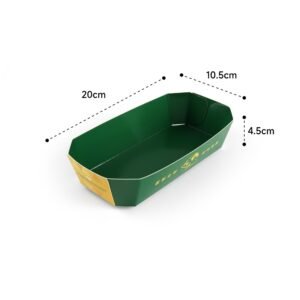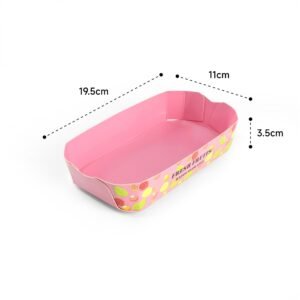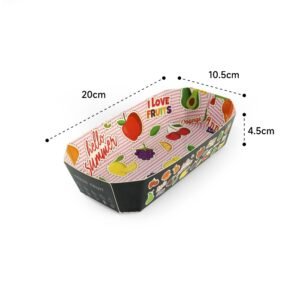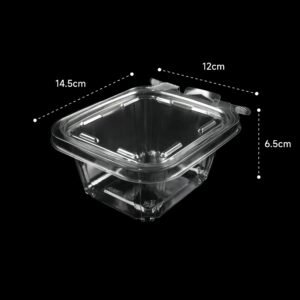What Are the Benefits of Food-Grade Plastic Packaging Boxes Made from PP Materials?
Inspiration
The challenges of food safety and packaging sustainability are significant in today’s market. Inadequate understanding of materials can lead to contamination, resulting in serious health risks for consumers and substantial financial losses for businesses. This article addresses these critical issues, providing comprehensive insights into food-grade plastic packaging boxes made from PP (polypropylene) materials.
Food-grade plastic packaging boxes made from PP materials offer exceptional safety and durability, making them ideal for preserving food quality and extending shelf life. Their versatile applications ensure compliance with safety standards and environmental regulations.
Understanding the unique properties of PP materials is essential for both novices and industry professionals. This article delves into the advantages, applications, and safety features of food-grade plastic packaging, enhancing your knowledge of effective packaging solutions.
PP materials are gaining popularity due to their lightweight, robust nature and resistance to moisture and chemicals. These characteristics make them suitable for various food products, from fresh produce to frozen items. Moreover, the recyclability of PP contributes to sustainable packaging practices, addressing the growing consumer demand for environmentally friendly options.
Key Benefits of PP Food-Grade Plastic Packaging
Safety and Compliance: PP is recognized for its safety in food applications. It meets FDA regulations and is free from harmful substances, ensuring consumer safety.
Durability: PP packaging withstands extreme temperatures and physical stress, making it ideal for both storage and transportation.
Lightweight and Cost-Effective: The lightweight nature of PP reduces shipping costs and makes it easier to handle, contributing to overall efficiency in the supply chain.
Versatile Applications: From airtight containers to clamshell packaging, PP can be molded into various shapes to accommodate different food items, enhancing convenience for consumers.
Sustainability: As a recyclable material, PP offers an eco-friendly alternative to single-use plastics, aligning with current sustainability trends.
Challenges and Considerations
Despite the many advantages, there are challenges associated with the use of PP in food packaging. The potential for leaching under certain conditions raises concerns about long-term food safety. Additionally, consumer perceptions of plastic can affect market acceptance. It is crucial for manufacturers to ensure transparency in sourcing and production practices to build trust with consumers.
Best Practices for Using PP Packaging
To maximize the benefits of PP food-grade plastic packaging, consider the following best practices:
Proper Storage: Maintain appropriate storage conditions to prevent degradation of the packaging material.
Regular Testing: Conduct routine testing to ensure compliance with safety standards and assess the integrity of packaging over time.
Consumer Education: Provide information on the recyclability of PP packaging to encourage responsible disposal and recycling practices.
Conclusion
Food-grade plastic packaging boxes made from PP materials offer significant advantages in safety, durability, and sustainability. By understanding these benefits and implementing best practices, both novices and industry practitioners can enhance their knowledge and contribute to a safer food supply chain.
In summary, PP packaging represents a pivotal solution for food safety and sustainability challenges, aligning with modern consumer expectations.
Recent Posts
- What is the Environmental Impact of Compostable Clamshell Containers?
- What Are the Benefits and Challenges of Biodegradable Food Packaging?
- How Is Bagasse Sugarcane Packaging Revolutionizing the Produce Aisle?
- How Can You Make Eco-Friendly Corn Starch Packaging?
- How Can You Craft Biodegradable Containers for Food?
Products
-
 Disposable Containers Delivery Udon Hot Noodles Bento Lunch Box Main Unit Black Microwave Safe Bowl Oval Microwavable Cake Packaging Boxes Trays Food Container PET Round Bowl
Disposable Containers Delivery Udon Hot Noodles Bento Lunch Box Main Unit Black Microwave Safe Bowl Oval Microwavable Cake Packaging Boxes Trays Food Container PET Round Bowl
-
 Contrasting Colors Paper Food Trays Fruit Trays Food Boats Paperboard Food Trays for Carnivals Fairs Festivals and Picnics
Contrasting Colors Paper Food Trays Fruit Trays Food Boats Paperboard Food Trays for Carnivals Fairs Festivals and Picnics
-
 Paper Food Trays Fruit Vegetable Trays Food Boats Paperboard Food Trays for Carnivals Fairs Festivals and Picnics
Paper Food Trays Fruit Vegetable Trays Food Boats Paperboard Food Trays for Carnivals Fairs Festivals and Picnics
-
 Paper Food Trays Fruit Trays Food Boats Paperboard Food Trays for Carnivals Fairs Festivals and Picnics
Paper Food Trays Fruit Trays Food Boats Paperboard Food Trays for Carnivals Fairs Festivals and Picnics
-
 Clamshell Tamper Evident PET Material Disposable Clear Plastic Biscuit Container
Clamshell Tamper Evident PET Material Disposable Clear Plastic Biscuit Container

